A Comprehensive Expert Guide to Value and Cost
Table of Contents
Toggle- A Comprehensive Expert Guide to Value and Cost
- The Allure of Black Marble: A Deep Dive into Value-Driven Design
- Semantic Loop: An Authoritative Guide to Black Marble Value
- Deconstructing the Price of Black Marble: Is It Really Expensive?
- Economic Factors Influencing Price
- Regulation and Sustainability: The New Industry Direction
- The “Dramatic” Black Marble: Pros, Cons, and Maintenance
- Final Verdict and Buying Blueprint
- Frequently Asked Questions (FAQs)
The Allure of Black Marble: A Deep Dive into Value-Driven Design
In the world of interior design and architecture, black marble has long been regarded as a high-end choice due to its deep, dramatic appearance and unparalleled sense of luxury. From ancient Roman monuments to modern minimalist kitchen countertops, this dark stone consistently creates a strong and timeless visual impact. However, with its aesthetic appeal comes a common question: “Is black marble costly?” The answer to this is far from a simple “yes” or “no,” as it involves a nuanced understanding of geology, global supply chains, market dynamics, and recent industry regulations.
To provide a comprehensive answer, this article will go beyond simple price tags to dissect every factor that influences the value of black marble. We will analyze the true components of its cost, uncover the subtle price differences compared to white marble and other stones, and provide a comprehensive purchasing blueprint based on market data and expert insights.
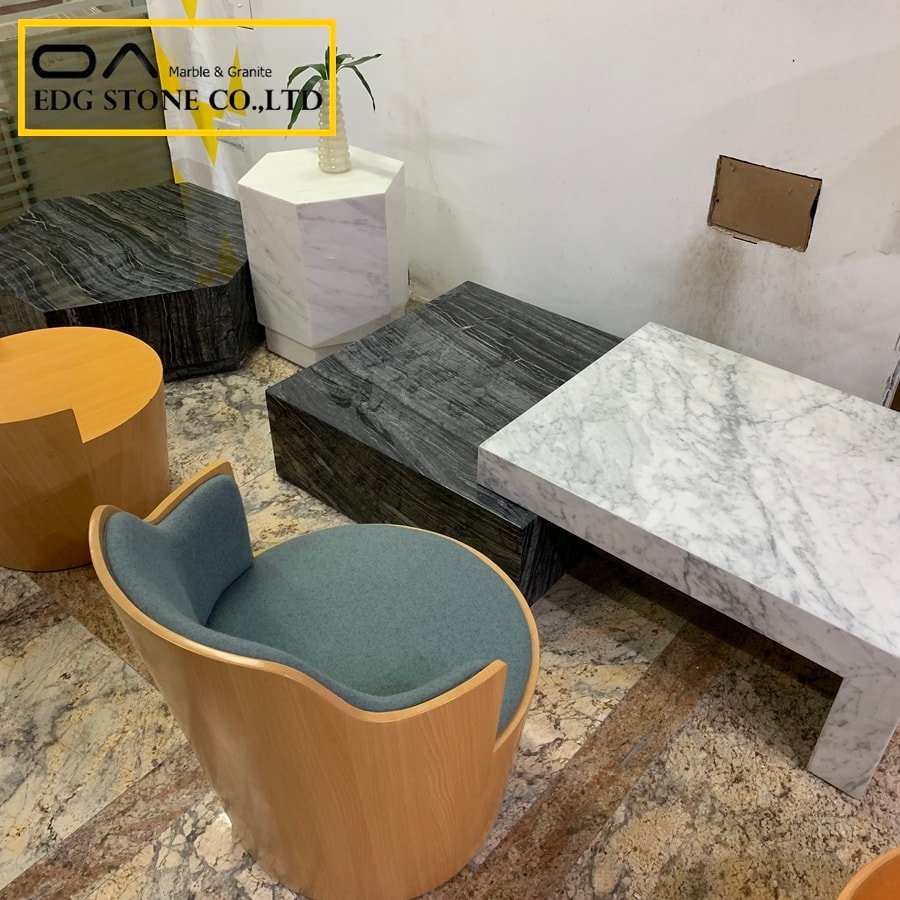
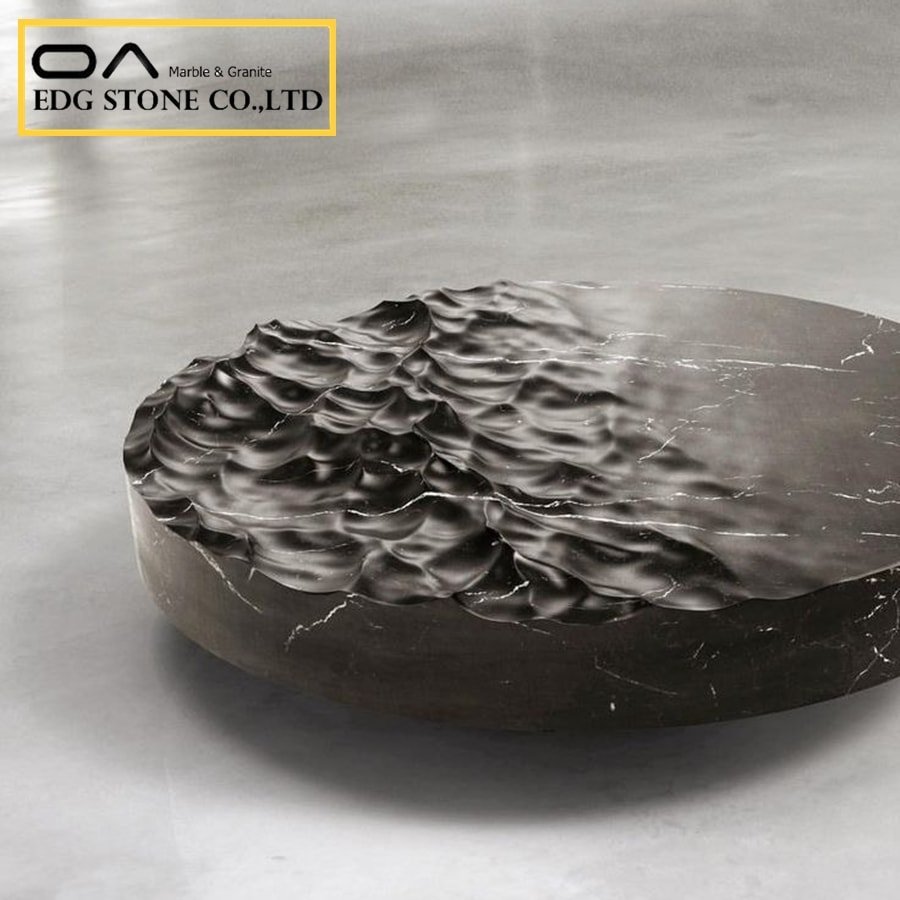
Semantic Loop: An Authoritative Guide to Black Marble Value
Deconstructing the Price of Black Marble: Is It Really Expensive?
There is no single answer to this question, as the cost of black marble is not a uniform number but a broad price range. According to market data, the average cost for black marble material alone can range from $20 to over $150 per square foot for high-end varieties.1 This wide price spectrum demonstrates that the cost a consumer faces is entirely dependent on their specific selection.
To better understand this price range, the analysis must go beyond a simple “black vs. white” comparison. The cost of black marble compared to white marble, granite, or quartz is primarily determined by rarity, origin, and quality, not by color itself. For example, many assume black marble is more expensive than white marble because it is generally less common to quarry.1 However, this view overlooks the existence of numerous premium-priced white marble varieties. Italian Calacatta and Statuario marbles, for instance, are highly sought after for their rarity and limited supply, with prices often exceeding $100 per square foot, and sometimes reaching over $200.2. In contrast, a Nero Marquina marble countertop typically costs around $75 per square foot, with some common tile varieties priced as low as $13.90 per square foot.2 This demonstrates that the statement “black marble is more expensive” is not always true.
To illustrate this nuanced difference more clearly, the following table compares the cost of black marble to other popular stone materials on the market:
Stone Type | Common Varieties | Origin | Typical Price Range (per sq. ft.) | Key Pricing Factors |
Black Marble | Nero Marquina | Spain, China, Iran | $15-$50+ (Countertops) 1 | Origin, quality, fabrication |
Nero Portoro | Italy | $100-$500+ (Countertops) 8 | Extreme rarity, golden veining | |
Black and Gold | Iran, Turkey | $40-$100+ 8 | Rarity, gold veining | |
White Marble | Carrara | Italy | $40-$90 2 | Abundant supply, market staple |
Calacatta | Italy | $100-$200+ 2 | Extremely rare, dramatic veining | |
Alternative Stones | Granite | Brazil, India, China | $10-$40 1 | Widely available, high durability |
Quartz | Engineered | $15-$70 1 | Man-made, durability, brand |
This price table clearly reveals that a stone’s value is not determined by its color but by its geological scarcity, the reputation of its origin, and the complexity of its fabrication.

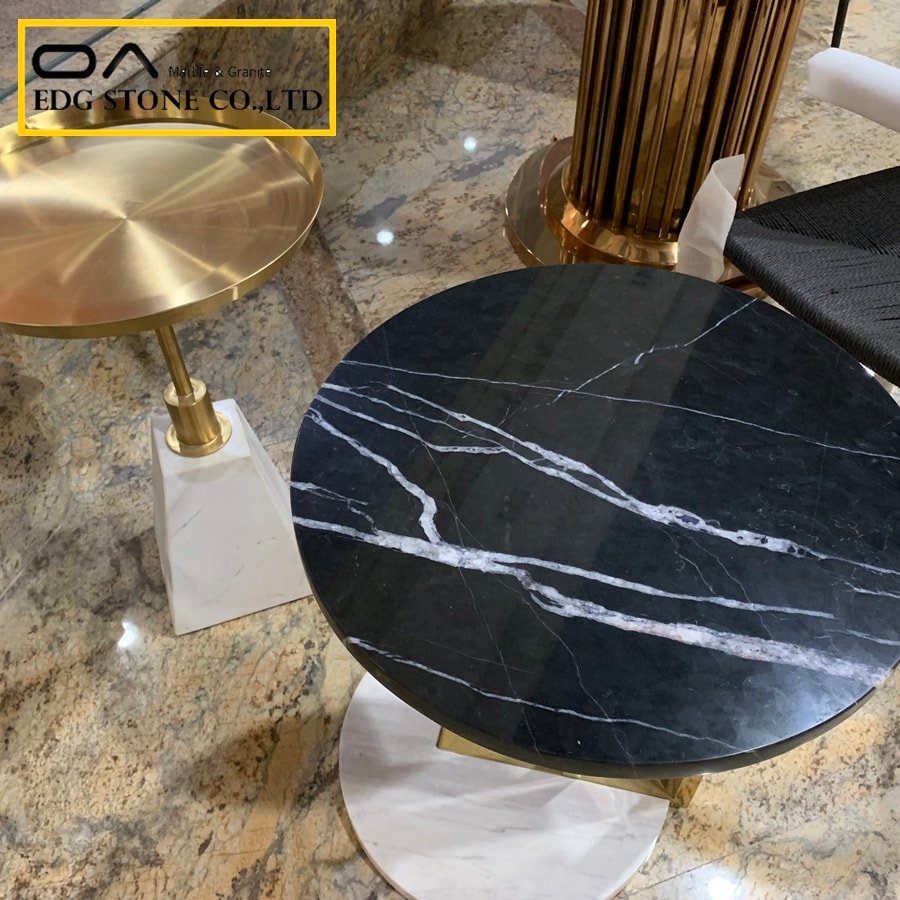
Economic Factors Influencing Price
The final cost of black marble is a complex function of the material’s cost combined with the economic factors of the supply chain and fabrication. Understanding these determinants is crucial for making an informed investment decision.
Material-Specific Factors
- Rarity, Origin, and Quarry Location: Rarity is the primary price driver.3 If a stone exists in only one or a few specific quarries, its supply is tightly controlled, and its price naturally soars. For example, Nero Portoro, hailed as the “most expensive black marble in the world,” owes its prestige to a unique golden crystalline texture found only in limited quantities in Italy.10 In contrast, Nero Marquina, while also highly prized for its distinct black-and-white contrast, is quarried in multiple countries, including Spain, China, and Iran, making its supply more accessible and its price more affordable.13 Furthermore, some quarries from different countries may attempt to pass off their marble as Italian to fetch a higher price, requiring consumers to be vigilant and ask about the stone’s true origin.4
- Grade, Quality, and Imperfections: Natural stone is graded from A to D to determine its quality level.3 Higher-grade stones have a more consistent color, fewer natural fissures or pits, and clearer veining, which commands a higher price.4 The stone’s physical integrity directly affects its workability and final aesthetic, serving as a key measure of its value.
- Slab Size and Thickness: Larger and thicker slabs are more expensive.4 Standard countertop thicknesses are typically 2 to 3 cm. Thicker slabs not only provide a more substantial look but also reduce the need for seams on large installations like kitchen islands, incurring additional material and production costs.1
- Finish and Fabrication: The final price also depends on the surface finish and edge profile.1 A polished finish requires additional labor and time to give the stone its high-gloss, reflective appearance, which adds to the cost.1 Complex edge profiles, such as ogee or beveled, can add $10 to $50 per linear foot compared to a simple straight edge.2 These custom details require more precise cutting tools and longer fabrication times, which are directly reflected in the final quote.
Supply Chain and Market-Level Factors
- The Price Waterfall: From Quarry to Countertop: The final price of black marble is profoundly affected by its journey through the supply chain. Multiple business models exist in the market: direct-from-manufacturer, distributors, and even multi-level distributors. Analysis shows that manufacturers’ direct-to-consumer outlets or vertically integrated companies can often offer more competitive prices by eliminating markups from intermediaries.16 This model not only reduces costs but also ensures strict quality control at every stage from quarrying to the finished product, guaranteeing color matching, vein consistency, and superior quality.17
- Global Market Dynamics and Trends: The marble market is a vibrant, global industry. According to 2024 data, the global marble market was valued at $68.5 billion and is projected to grow at a CAGR of 4.1% from 2025 to 2033, reaching $98.34 billion by 2033.18. This growth is largely driven by the booming global construction industry and a continuous increase in demand for home renovations.19 The complex interaction between this expanding market demand and global supply directly impacts the availability and pricing of the stone.
- Logistics and Trade Impact: Transportation costs account for a significant portion of the total stone price. When major quarries face seasonal or operational challenges, it creates a ripple effect across the global marble market.20 Additionally, labor shortages at quarries and processing facilities, along with higher energy costs, have pushed production expenses upward.20 These costs are ultimately passed on to the consumer through the supply chain.
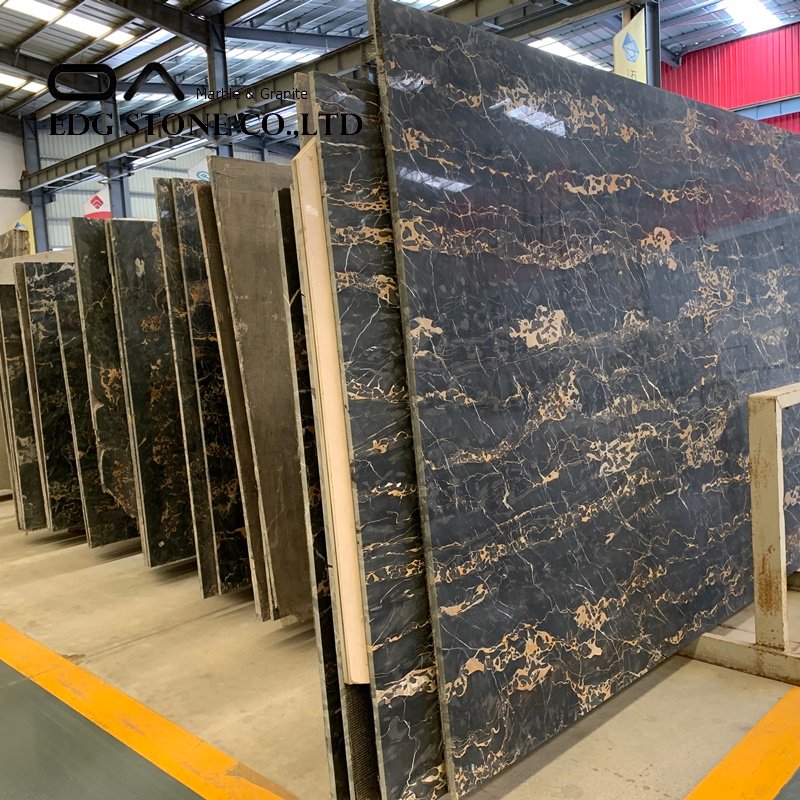
Regulation and Sustainability: The New Industry Direction
Recent regulations and sustainability trends are profoundly reshaping the natural stone industry. These changes not only affect operational costs but also point toward future industry development.
The New Regulatory Landscape for the Stone Market
- Environmental Regulations and Compliance Costs: Quarrying operations are facing increasingly stringent environmental regulations. Many countries have implemented stricter mining permits, environmental impact assessments, and land restoration obligations, which directly affect stone supply and pricing.20 To comply, quarry operators must invest in sustainable extraction methods, water management systems, and habitat preservation, which increases operational costs and is ultimately passed down the supply chain, causing price fluctuations.20 However, these regulations also ensure long-term resource sustainability and environmental protection, which, in the long run, benefits the industry’s stability. The industry is actively adopting innovative technologies, such as diamond wire mining, which is more precise and less invasive than traditional open-pit mining, significantly reducing material waste and land impact.21
- Taxes and Trade Policies: The import of natural stone is subject to various tariff structures that significantly impact the industry’s economics.22 For quarry operators and stone producers, severance taxes—a levy on the extraction of natural resources—typically range from 2% to 8% of the extracted material’s value.22 These taxes directly increase production costs. Additionally, import duties vary by material type, processing level, and country of origin. For example, raw marble blocks generally face lower duty rates (around 0-3%), while finished marble products have duties as high as 6.5%.22 This tariff structure encourages importers to ship raw blocks for local processing, which can lower duties and create local jobs.
The “Dramatic” Black Marble: Pros, Cons, and Maintenance
Choosing black marble is a bold design statement, but the value of this investment extends beyond its initial beauty. It also requires considering its long-term maintenance and use characteristics.
Black Marble: An Investment, Not a Purchase
Many people misunderstand the durability of marble, but the truth is that black marble is very durable and heat-resistant.23 It can withstand the direct placement of hot pots and pans from the kitchen. However, its main challenge is not physical strength but its inherent properties as a calcium carbonate-based soft stone.25 This means it is susceptible to etching from acidic substances like vinegar or lemon juice, which can leave rough, dull spots on the surface.1 Furthermore, despite being sealed, it remains porous and can absorb liquids like oil or red wine, which may leave permanent stains if not cleaned immediately.5
For black marble countertops, their unique beauty comes with specific maintenance challenges. Users on social media and forums commonly report that polished black marble surfaces visibly show fingerprints, smudges, water spots, and dust.5 This is because the dark background magnifies every surface imperfection. In contrast, honed or leathered (matte) finishes, while less glossy, are much better at hiding daily wear and tear and are more suitable for high-traffic areas.25
Therefore, owning black marble requires a commitment to ongoing maintenance. This includes:
- Daily Cleaning: Use a pH-neutral cleaner or warm water with a soft cloth for daily cleaning, and avoid any acidic or abrasive products.25
- Immediate Spill Cleanup: Any spills, especially of acidic or oily liquids, must be wiped up immediately to prevent permanent stains.25
- Regular Sealing: This is the most crucial step for protecting black marble. Countertops should be resealed every six months to a year to enhance their resistance to stains.25 For floors and high-traffic areas, professional densification treatments can make the stone more resistant.28
- Professional Maintenance: Every 3-5 years, it is recommended to have professionals polish or restore the surface to bring back its original luster.28
In the long run, the total cost of owning black marble includes not only the initial material and installation fees but also the ongoing maintenance expenses. The table below offers a more holistic comparison of the true cost of black marble versus granite and quartz:
Feature | Black Marble | Granite | Quartz |
Initial Cost | Higher, especially for rare varieties 1 | Generally lower, with affordable common varieties 1 | Mid-range, with significant brand variation 1 |
Durability | Durable but soft, easily etched and scratched by acids 5 | Extremely hard, highly scratch-resistant, and heat-resistant 1 | Highly resistant to scratches, stains, and heat 1 |
Maintenance | Requires regular sealing, avoids acidic cleaners, shows fingerprints and smudges 25 | Generally low-maintenance, some varieties need sealing 9 | Virtually maintenance-free, non-porous 1 |
Aesthetics | Unique natural veining and luxurious feel, high visual impact 29 | Diverse colors and patterns, but lacks classic marble elegance 1 | Uniform and consistent, can mimic natural stone 1 |
Final Verdict and Buying Blueprint
Whether black marble is expensive ultimately depends on the specific variety and your budget. It is not universally more costly than white marble, but certain extremely rare varieties are indeed at the top of the stone price spectrum. Its true value lies in its timeless beauty and unique natural texture.
When making a decision, it’s essential to recognize that buying black marble is not a simple transaction but a long-term investment that requires careful consideration. After setting a budget, research different varieties and weigh their aesthetic value against their practical maintenance needs.
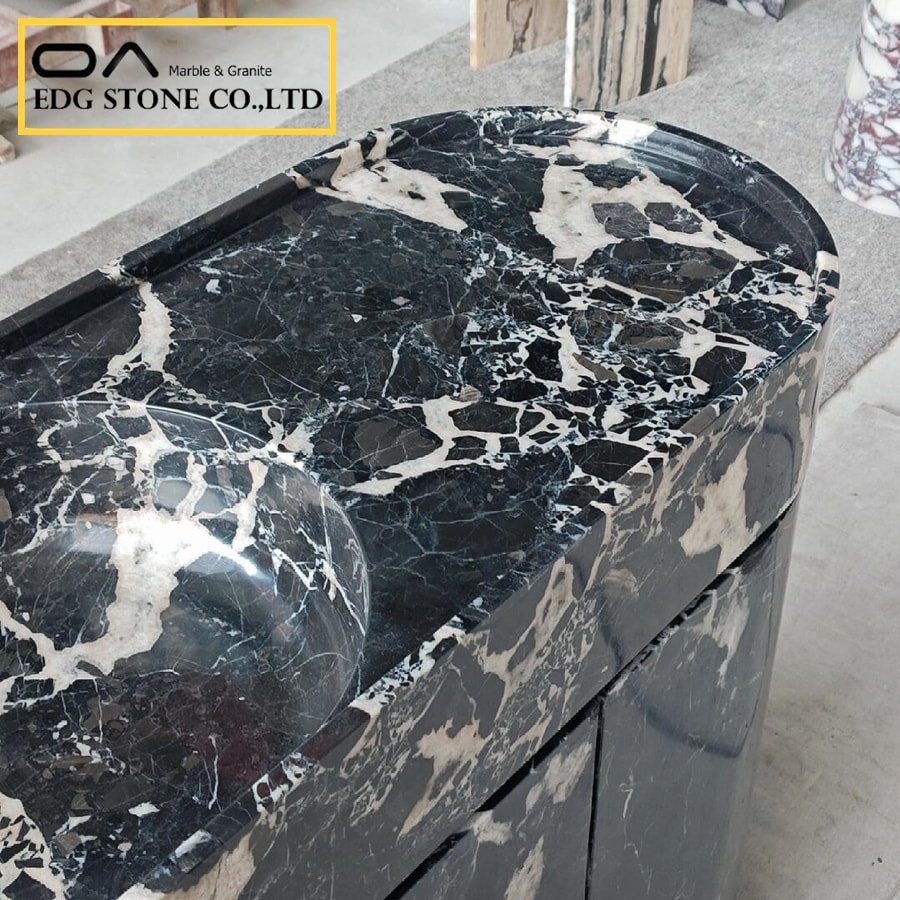
Considerations for Buying Black Marble:
- What is the need: Consider whether you need countertops, flooring, or wall cladding, as different applications require different thicknesses and processing.
- Why choose it: If you seek an unparalleled sense of luxury and are willing to invest time and effort in maintenance, then black marble is an ideal choice.
- How to buy: It is recommended to purchase from a reputable supplier or a vertically integrated manufacturer.17 This not only ensures the stone’s genuine origin and quality but also allows for more competitive pricing by eliminating intermediaries. When inquiring about prices, be sure to specify the stone grade, size, thickness, and finish to get the most accurate quote.16
- Long-term considerations: The “true cost” of black marble includes its maintenance fees and potential repair costs. If you choose a polished finish, be prepared for regular cleaning to maintain its shine.
Frequently Asked Questions (FAQs)
Which variety of black marble is the most expensive?
Nero Portoro is considered one of the most expensive black marbles in the world, with prices far exceeding other varieties.
Is black marble more durable than granite?
No, granite is generally harder and more durable than marble, with lower porosity, making it more resistant to scratches and etching from acids.
What are the main disadvantages of black marble countertops?
The main disadvantages of black marble are that it easily shows fingerprints, water spots, and dust, requiring frequent cleaning to maintain its pristine look. It is also prone to etching from acidic substances and is relatively porous, making it susceptible to staining if not properly sealed.
What is the price range for black marble tiles?
The price of black marble tiles varies greatly depending on the variety, size, and finish. For example, Nero Marquina marble tiles can be priced as low as $13.90 per square foot.
How do environmental regulations affect marble prices?
Stricter environmental regulations, such as mining permits and land restoration obligations, increase quarry operational costs.20 These costs are typically passed on to consumers, leading to an increase in the price of natural stone.
50 SEO Tags: black marble cost, is black marble expensive, black marble price per square foot, nero marquina price, nero portoro price, marble vs granite cost, black marble countertops, black marble tiles, black marble slab price, marble value guide, expensive marble types, rare black marble, black marble pros and cons, marble maintenance tips, marble sourcing, quarry direct marble price, marble market trends, black and gold marble price, which marble is most expensive, how to clean black marble, polished vs honed marble, marble environmental regulations, marble industry analysis, sustainable marble, marble countertop cost, black marble flooring cost, marble tile price, marble price manufacturer, marble factory direct, marble wholesale price, black marble vs white marble cost, calacatta vs nero marquina, statuario vs black marble, luxury black marble, marble countertop installation cost, marble slab cost, black marble kitchen, black marble bathroom, black marble design, marble price per ton, marble quarrying, marble import duties, marble severance taxes, marble market size 2024, marble market forecast, vertically integrated marble company, marble quality grade, black marble durability, marble etching, marble stain resistance.
